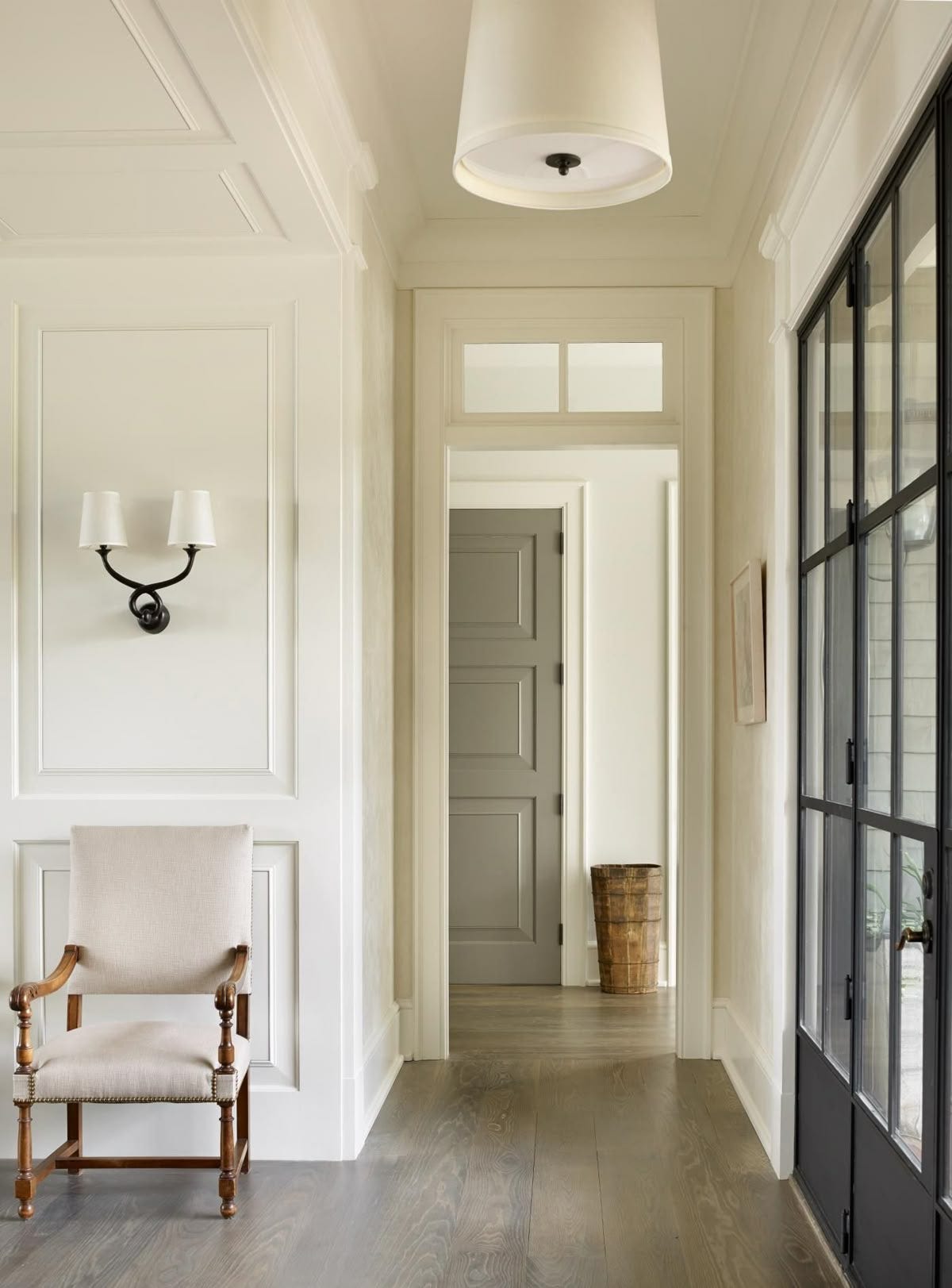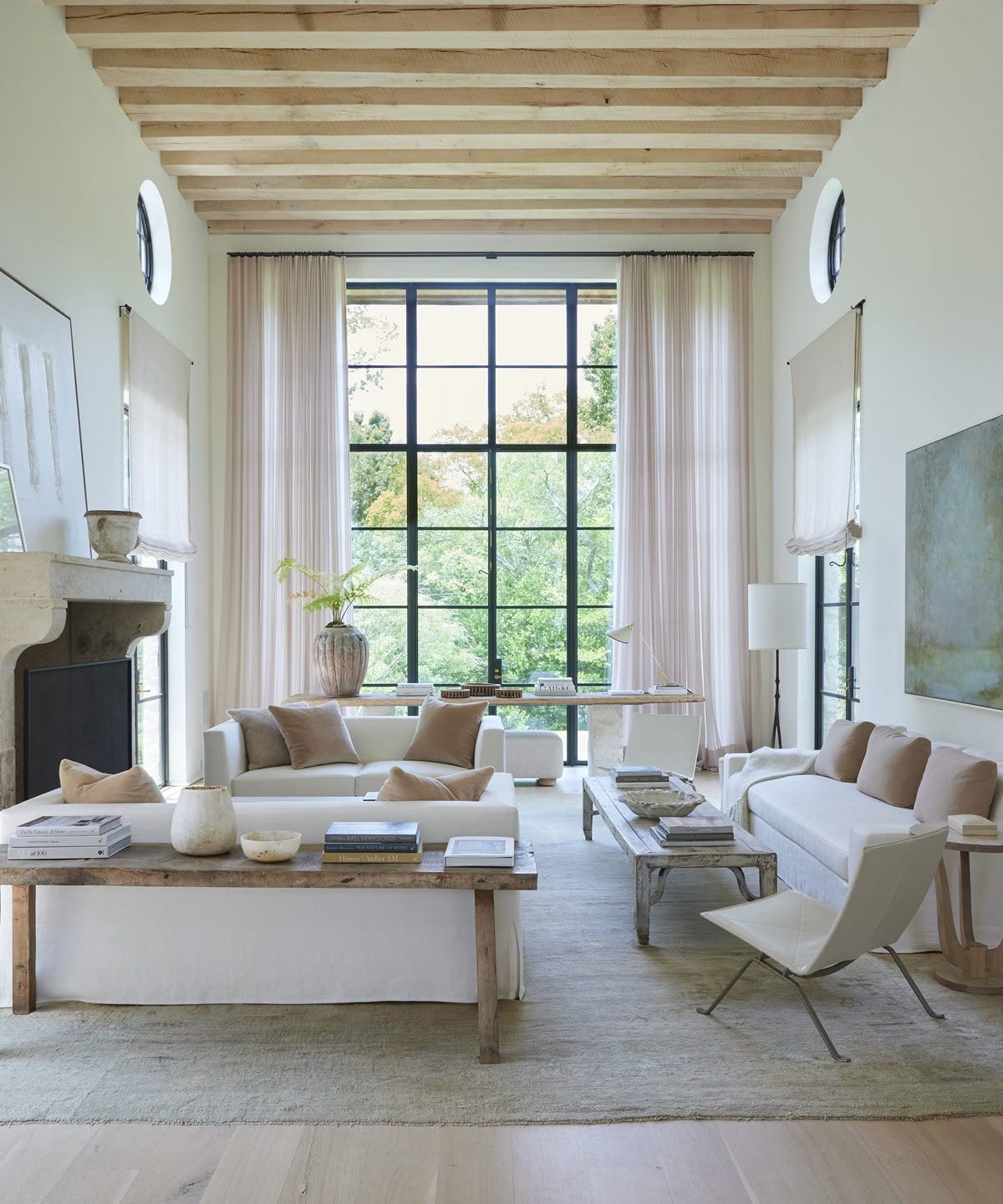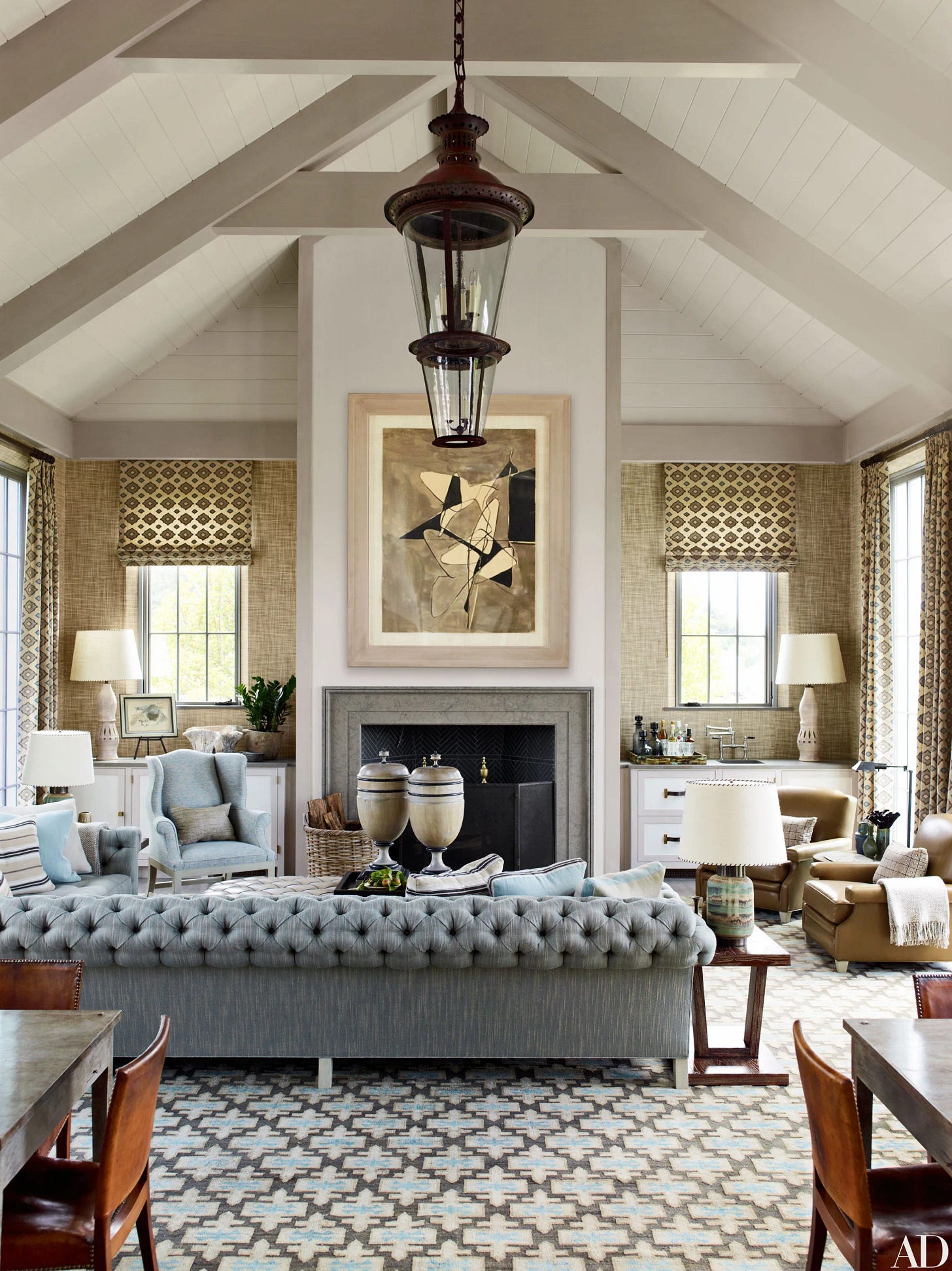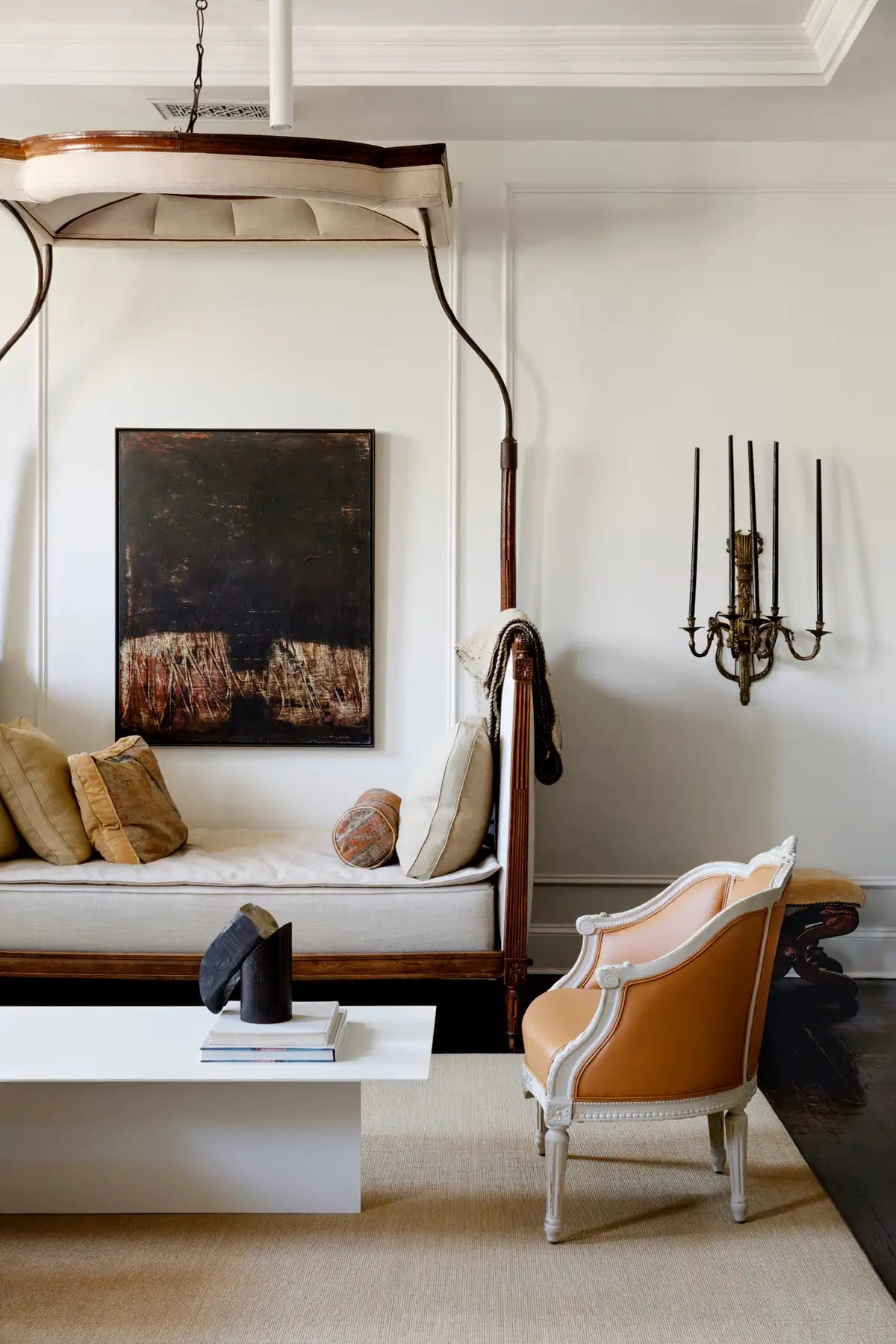7 Design Principles I Swear By for a High-End Look
My go-to essentials for spaces that look beautiful and feel luxurious
The first time I felt the power of design, I was a schoolgirl sitting cross-legged on the bed in my best friend’s bedroom. We were supposed to be trading stickers, but I was distracted by something else entirely: the trim near the ceiling.
Her room always felt more magnetic than mine—elevated, refined—but I didn’t know why. I just knew I liked being in it, as if the room held a kind of beauty I longed for but didn’t yet know how to create. There was a quiet dignity and elegance to the way it carried itself.
That night, back in my own bedroom, I looked up and saw it. Or rather—didn’t.
No crown molding. No trim at all. Just bare walls meeting a bare ceiling.
That was the difference. That subtle band of architectural detail was what made her room feel luxurious and complete.
And just like that, I cracked the code at age nine.
That moment planted a seed. Since then, I’ve spent years—first instinctively, then professionally—studying what makes a space feel elevated. Not necessarily expensive, but unmistakably polished—designed with care and intention.
It’s the small, deliberate details that shape not just a room, but how you feel in it. More than any single feature, it’s the layering of thoughtful details that gives a space its power—shaping its atmosphere and the way you move through it.
I know this not just as a designer, but as a woman who’s spent years learning how to feel at home—in her work, in her body, in her life. We often think of beauty as a luxury, but I see it as something essential—a form of care. And care is where everything begins.
Here are seven specific ways I’ve learned to elevate a space—subtle details that bring a home polish, balance, and the quiet luxury of a high-end interior:
1. The Bones of Beauty
For me, a room’s presence begins with its architectural features—they set the tone and give it dignity. I love substantial baseboards—at least nine inches tall—for the way they instantly anchor a space and give the architecture a more confident stance. Well-trimmed windows and doors have the same effect, while thin trim can leave a room feeling flimsy. When proportions allow, crown molding adds a final layer of polish and timeless elegance that speaks to craftsmanship.
2. The Art of Balance
Getting scale right is one of the most powerful ways to elevate a room. Many assume small rooms need small furnishings, but I’ve found the opposite to be true—larger pieces bring presence and make a space feel more expansive. The same goes for rugs: I prefer a generous size that grounds the room and ties everything together. Mine usually extend to within 6–12 inches of the wall on all sides, with all furniture legs resting on them and at least an eight-inch margin around each piece. These choices create proportion and flow that feel intentional, balanced, and high-end.
3. The Luxury of Restraint
I’ve always believed that luxury has as much to do with what you leave out as with what you put in. I’d rather live with fewer pieces I truly love than fill a room for the sake of filling it. I see negative space as just as valuable as the objects themselves—it gives a room air, clarity, and a sense of ease. When I’m intentional about what stays, each piece has room to breathe, and its beauty feels even more pronounced. It’s in that quiet space between things that a room’s true character has room to emerge.
4. The Frame of a Room
The right window treatments have a way of finishing a room, adding softness and intention. Without them, even the most beautiful space can feel a little incomplete. I like to hang curtains higher than most people expect—well above the window frame—to draw the eye upward and create the illusion of taller ceilings. I gravitate toward quality fabrics and tailored designs for a finish that feels intentional and refined. And when possible, I go custom—it doesn’t just fit the room, it belongs to it, adding a quiet layer of polish and harmony you can feel the moment you walk in.
5. The Poetry of Light
Lighting is one of my favorite ways to shape the mood and warmth of a room. I love to layer it—ceiling fixtures for structure, sconces for softness, table lamps for intimacy, and floor lamps for balance. I make sure light is sprinkled throughout the room so it feels alive from every angle, and I always add dimmers so the atmosphere can shift with the moment. To me, good lighting doesn’t just brighten a space—it adds texture, draws out architectural details, and wraps the room in a glow that makes you want to linger.
6. The Touch of Truth
The materials you live with shape the entire feeling of a home. I’m always drawn to the real, natural ones—stone, wood, wool, linen—for their honesty and timelessness. They age with you, softening at the edges, taking on a patina that quietly tells the story of your life in the space. I also notice the way things feel in the hand as much as how they look to the eye. A well-made piece carries a certain weight and substance—a quiet assurance of quality that endures long after trends fade.
7. The Quiet Power of Color
I’ve learned that a restrained palette has a way of settling a room, making it feel calm, cohesive, and quietly elevated. I tend to start with soft neutrals—creams, warm beiges, soft taupes—as a timeless foundation, then bring in muted color with intention, letting it draw the eye to an architectural detail or create a small moment of focus. In the most beautiful, high-end spaces, the colors never compete; they simply hold the room together, allowing the textures, materials, and craftsmanship to speak in their own voices.
The beauty of these principles is that they aren’t reserved for grand houses or limitless budgets—they’re about intention. About choosing details that quietly shape not only how a room looks, but how it feels to live in. Layer in quality, proportion, light, and care, and a space gains both magnetism and atmosphere. It becomes your refuge and your reflection—elevated not for show, but for the way it holds you. When we give this kind of care to our surroundings, we’re not just making a home—we’re crafting a room of our own, one that mirrors who we are and nurtures who we’re becoming. And to me, that’s the most luxurious feeling of all.
x Crystal
Image credits: Opening: Gil Schafer, 1. Beth Webb, 2. Clements Design, 3. Rose Uniacke, 4. Betsy Brown, 5. Steven Gambrel, 6. Mark D. Sikes, 7. Darryl Carter
You can find me on Instagram here, and explore the full archive of past letters here.











Restraint always makes a room feel better 🤍